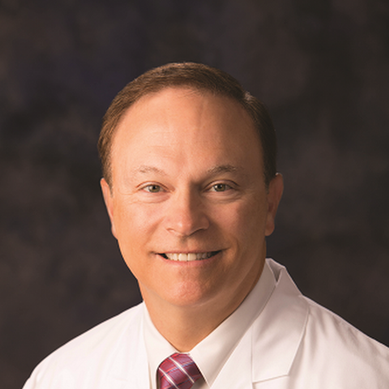Reverse shoulder replacement

Annie Milner, 68, is not one to sit still. She hikes, plays golf, tennis and pickleball. As a young girl, she began swimming, eventually becoming an All American swimmer at UCLA. Other activities she enjoyed in the past include backpacking, skiing and horseback riding. Currently, she’s wrapping up a one-year term as president of Ironwood Country Club. And she is the principal caretaker of her husband, who has multiple sclerosis.
But about ten years ago, the range of motion in her right shoulder began to diminish due to an old injury, limiting her ability to do many of the things she wanted and needed to do.
“I’d had an accident while camping in my late teens and my shoulder came totally out of its socket,” Milner relates. “I was able to shake it back in, and when I saw a doctor, they recommended that I not have surgery because the technique wasn’t very refined at the time.
“Over the years, it would continue to come out of the socket — if I was playing tennis, for example, or if I didn’t tuck and roll when I fell while skiing,” she continues. “With these recurring injuries, my shoulder mobility became less and less. I didn’t have extreme pain, but I couldn’t lift my right arm very high. My golf swing was altered, I couldn’t serve a tennis ball, and I couldn’t brush my hair or reach an overhead shelf.
“So I started doing some research and talking to people about my options,” she adds.
Serendipitously, one of these people was Board Certified Orthopedic Surgeon Patrick St. Pierre, MD, a neighbor at Ironwood who is one of the world’s top shoulder specialists and among the first surgeons in the U.S. to perform what’s called a reverse shoulder replacement. He teaches the procedure to other surgeons, has helped design a reverse prosthesis, and is one of six surgeons developing the Mako® robot for the shoulder. Milner scheduled a consultation with him in January 2021.

Dr. St. Pierre explains:
“Prior to fifteen years ago, all shoulder replacements were what’s called anatomic shoulders — we’d replace the ball-and-socket joint, recreating the normal anatomy,” he says. “We’d put a plastic cup where the socket used to be and attach a metal ball to the top of the upper arm bone, the humerus.
“If the rotator cuff healed perfectly and the anatomy of the bone was good, then people could have great results,” he continues. “But in someone with bad arthritis, sometimes the bone on the cup portion wears away, or rotator cuff injuries interfere with the shoulder’s function. So, the shoulder replacement won’t work well and loosens over time.
“When I saw Annie, she already had severe deformity of the socket,” Dr. St. Pierre says. “If I put in a plastic liner, it wouldn’t be in the correct orientation to allow the shoulder to function. Also, because the joint would be unbalanced, the ball would fight against that plastic cup and eventually loosen, causing pain and possibly infection.”
In a reverse shoulder replacement, however, the orientation of the ball and socket are reversed (hence the name of the procedure). The metal ball is affixed to the socket and the plastic socket implant is affixed to the top of the humerus. This design has more stability, and shoulder motion is controlled by the deltoid muscle instead of the rotator cuff.
This makes reverse shoulder replacement an ideal choice when an arthritis-damaged shoulder needs new surfaces but doesn’t have sufficient healthy soft tissue to support stabilization and movement. In fact, more than 70 percent of shoulder replacements in the U.S. today are reverse procedures. Notably, 90 percent of Dr. St. Pierre’s surgeries are reverse shoulder replacements, largely due to the prevalence of bony deformity and rotator cuff tears in the desert’s older patient population.
Milner underwent reverse shoulder replacement surgery in February 2021. She admits that the first few days post-op were difficult.
“Once the anesthesia wore off, I was in a lot of pain because I couldn’t take painkillers, only Tylenol,” she says. “The office had recommended that I get an ice machine prior to my surgery and having that for icing my shoulder was a lifesaver.”
She also carefully followed the post-op physical therapy regimen Dr. St. Pierre recommended.
“Therapy is very important, so on our website we have a video program in which my physician assistant and I demonstrate the exercises we want patients to do for five minutes at a time, five times a day,” he says.
“For the first couple of months after surgery, an hour of therapy at a time is way too long and twice a week isn’t frequent enough. So we provide an at-home program which, if patients do faithfully, their recovery can be incredible. If patients need additional help, or want specified therapy, we involve our physical therapists later in the process.”
Milner can attest to that.
“I’m doing great,” she says. “I can play pickleball, golf, tennis, swim and paddleboard. I can do pretty much anything I want and all the things I need to do in day-to-day life. It’s really pretty remarkable, and I’m very, very pleased with the results of the surgery.”
“That’s really the point of it all, to be able to live your life without pain and to be able to do the things you want to do,” Dr. St. Pierre says, referring to reverse shoulder replacement as well as orthopedic surgery in general. And he knows whereof he speaks: he had both hips replaced three years ago and his rotator cuff repaired just five weeks before we spoke.
“The goal is to help people have happy lives that are fulfilling,” he adds.
For more information or to contact Eisenhower Desert Orthopedic Center, call 760.568.2684 or visit EisenhowerHealth.org/EDOC.



